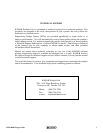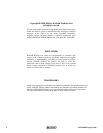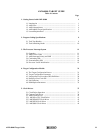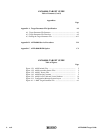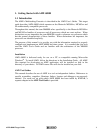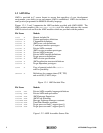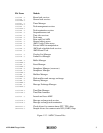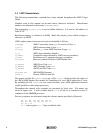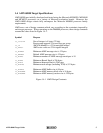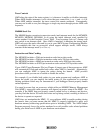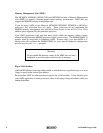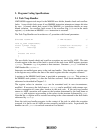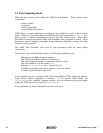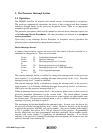
4
K
A
DAK
AMX 68000 Target Guide
1.3 AMX Nomenclature
The following nomenclature standards have been adopted throughout the AMX Target
Guide.
Numbers used in this manual are decimal unless otherwise indicated. Hexadecimal
numbers are indicated in the format 0xABCD or $ABCD.
The terminology A(Table XYZ) is used to define addresses. It is read as "the address of
Table XYZ".
Read/write memory is referred to as RAM. Read only memory (non-volatile storage) is
referred to as ROM.
AMX symbol names and reserved words are identified as follows:
cjkkpppp AMX C procedure name pppp for service of class kk
cjxtttt
AMX structure name of type tttt
xttttyyy
Member yyy of an AMX structure of type tttt
CJ_ID
AMX object identifier (handle)
CJ_ERRST Completion status returned by AMX service procedures
CJ_CCPP Procedures use C parameter passing conventions
CJ_ssssss Reserved symbols defined in AMX header files
CJ_ERxxxx AMX Error Code xxxx
CJ_WRxxxx
AMX Warning Code xxxx
CJ_FExxxx
AMX Fatal Exit Code xxxx
CJ532xxx.xxx
AMX 68000 filenames
CJZZZ.H Generic AMX include file
The generic include file CJZZZ.H is a copy of file CJ532.H which includes the subset of
the AMX 68000 header files needed for compilation of your AMX application C code.
By including the file CJZZZ.H in your source modules, your AMX application becomes
readily portable to other target processors.
Throughout this manual code examples are presented in lower case. File names are
shown in upper case. C code assumes that an
int is 32 bits as is common for most C
compilers for the M68000 processor.
Processor registers are referenced using the software names specified by Motorola.
D0, D1, D2, D3, D4, D5, D6, D7
A0, A1, A2, A3, A4, A5, A6, A7
PC, SP = A7
SR =
status register, CC = flags (condition code)




